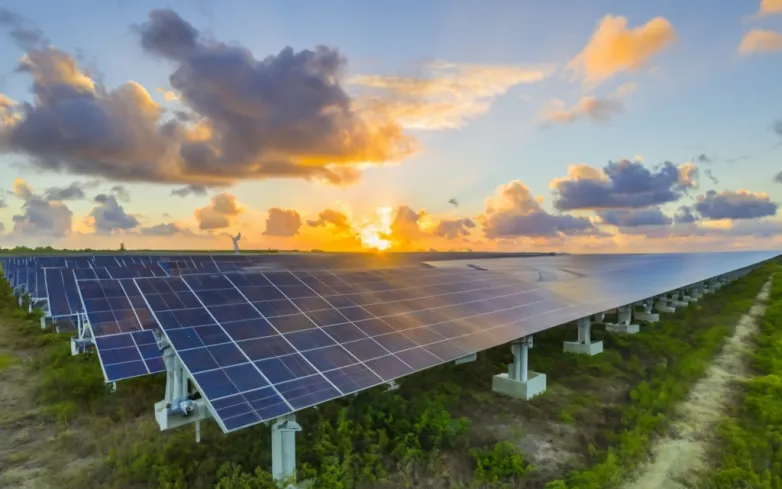Masdar Advances Oman’s Ibri III Solar-Storage Hybrid
Nov 26, 2025 10:51 AM ET
- Masdar’s Ibri III pairs 500‑MW solar with 100‑MWh storage—Oman’s first utility‑scale hybrid—shifting midday sun to evening peaks, stabilizing prices, curbing gas use, and boosting grid resilience with grid‑forming inverters.

A Masdar-led consortium signed EPC terms for Ibri III, a 500‑MW solar plant paired with a 100‑MWh battery, marking Oman’s first utility‑scale hybrid. The project will store midday output to meet evening peaks, aiming to smooth prices, cut gas-turbine use, and provide frequency response via grid-forming inverters and single-axis trackers.
Co-location will share interconnection and substation assets, reduce conversion losses, and enable a single controller to co-optimise energy shifting and ancillary services. Long‑lead transformers and MV gear set the schedule; staged energisation is planned. Lender-driven safeguards cover dust, water and recycling. Rising demand and links make Ibri III Gulf template.
What makes Ibri III Oman’s first utility-scale solar-plus-storage grid template?
- First OPWP procurement to bundle PV and storage under one hybrid PPA with remunerated energy shifting and ancillary services, creating a bankable commercial model for storage in Oman
- Technical spec sets a benchmark for grid-forming performance (fast frequency response, synthetic inertia, ride-through, black-start readiness) aligned to OETC grid code and GCC intertie needs
- Clear risk allocation for batteries: degradation and availability guarantees, augmentation schedule, and performance LDs/bonuses—template terms lenders can replicate
- Hybrid plant controller certified for coordinated dispatch, with setpoints from the EMS/SCADA and autonomous fast services—operational blueprint for future hybrids
- AC-coupled design with pre-built balance-of-plant capacity and bays to scale storage duration without new interconnection—future-proofed expansion path
- Oman-specific reliability engineering: liquid-cooled BESS, derating for extreme heat, soiling-tolerant PV O&M (robotic/dry cleaning), and dust intrusion hardening
- Standardized cybersecurity and interoperability (IEC 61850, IEC 60870-5-104/ICCP, IEEE 2030.5) to integrate with OETC control centers and market interfaces
- Financing stack uses green/sustainability-linked debt with KPIs tied to reliability and emissions displacement—unlocking cheaper capital for similar projects
- ELCC-based valuation agreed with the offtaker to credit evening peak capacity—framework for quantifying system adequacy from hybrids
- Curtailment, congestion, and reserve co-optimization encoded in the PPA operating protocol—reduces balancing costs and sets dispatch precedence
- Staged energization tied to long-lead grid equipment logistics—schedule playbook other projects can copy in tight supply chains
- Siting near strong 220/132 kV nodes and existing right-of-way—reduces losses and substation build risk; a replicable locational strategy
- Local content and training provisions to develop hybrid-plant operators and protection engineers—building national capability for scale-up
- Environmental and end-of-life program tailored to arid conditions (water budgets, dust management, battery recycling/second-life pathways under Omani rules)
- Readiness to participate in evolving GCC cross-border services as markets open—positions hybrids as regional flexibility providers
Also read
- Brookfield’s Sunovis Nabs 95-MW German Solar Deal
- Egypt Launches 4GW Suez Solar Manufacturing Hub
- Kyivstar buys 12.9-MW solar firm to bolster Ukraine’s resilience
- Poland funds eight energy clusters, thousands of rooftop solar installs
- Enviromena overturns denial, wins approval for 40-MWac English solar farm

